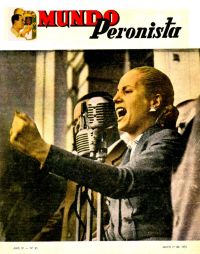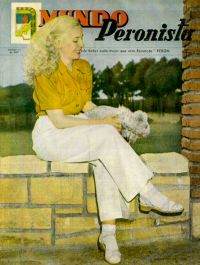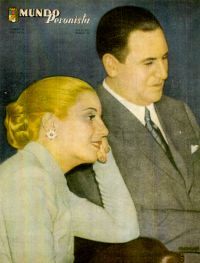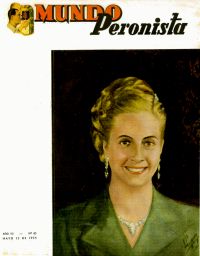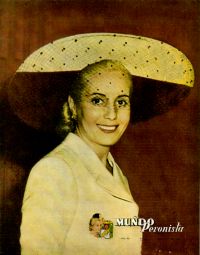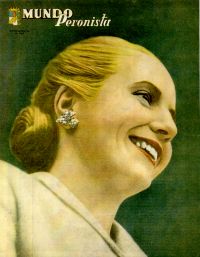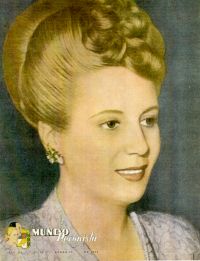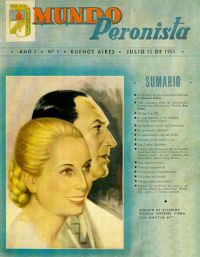PROLOGUE: BETWEEN THE ACTS AND BETWEEN THE LINES
1. MARÍA EVA (1919-1931)
Argentina--Land of Silver?
A Nation at Last
Only a Simple Girl
2. EVA DUARTE (1935-1943)
Wonderful Town
Greedy Officers Unite
3. EVA DUARTE AND JUAN PERÓN (1943-1944)
Eva and Her Colonel
Eva and the Army
Struggling for Power
On the Air
Defeat, Triumph, and the Descamisados
4. DOÑA MARÍA EVA DUARTE DE PERÓN (1946-1947)
Legitimate at Last
Eva and the CGT
The Rainbow of Argentina
5. COMPAÑERA EVITA (1947-1951)
A New Argentina
Charity and Social Aid
The Endless Days
La Prensa Goes too Far
6. SANTA EVITA (1951-1952)
The Open Forum
Victory for the Army and a Patriarchal Society
A New Role for Eva
A Martyr at Last
THINGS ARGENTINE (1955-1996)
Evaís Body
Perón Is Ousted
The Cult of Evita and Peronismo Then and Now
EPILOGUE--EVITA LIVES!
Diamond Orchid
Mission: Impossible Episode
Copi's Eva Perón
Eva Perón: Her True Story
THE MUSICAL'S LONG ROAD TO FILM
THE ARGENTINE AFTERMATH (1952-1996)
Eva's Body
Perón is Ousted
The Cult of Evita and Peronism Then and Now
BIBLIOGRAPHY
PROLOGUE: BETWEEN THE ACTS AND BETWEEN THE LINES
It is after eleven on an evening in May 1979. Backstage at the Los Angeles Music Center's Pavilion, an actor leaves his dressing room after the lengthy task of removing his complex makeup. Six elegantly dressed !people have waited forty-five minutes to see him without it because they had feared they were re-living 1948.
Two months later in San Francisco, the stage door manager announces the arrival of two young people from Argentina in the green room, and many of the 47 cast members rush upstairs to meet them.
In Beverly Hills, the show's publicist is unable to have an office machine serviced because the repairman refuses to work in a room where a photo of a woman hangs on the wall. A woman who died twenty-seven years ago and 6,118 miles away.
Evita made its American debut on May 8, 1979 in Los Angeles, presented by the Civic Light Opera. Traditionally conservative, its subscibers had fled in droves from the profanity in another show, Chicago, barely year before, but were now braving two-hour gas lines to fill the 3,231 seats in the Pavilion. Evita was not as completely rock-oriented as Godspell or Hair, but it was very radical, nonetheless. Patrons used to Rodgers and Hammerstein were now subjected to a dubious heroine in a show with no spoken dialogue and a non-traditional form.
Andrew Lloyd Webber and Tim Rice had achieved worldwide fame with another opera, Jesus Christ Superstar , and had first produced Evita on records, then on the stage in London. Because of the immense popularity of the album, sell-out crowds walked into the theatre there humming the music, but sales in America had not been good. It is, of course, banned in Argentina.
The only American involved, director Harold Prince, took every element thought to guarantee failure on Broadway and somehow wove them into a cloth of pure box office gold. It was time to unveil it to the American public.
A real-life show business spectacle took place in Argentina from 1945 to 1952. Its star, author, and stage manager was certainly the most controversial woman of this century; she was also one of the most charismatic. She played her scenes from the rear of trains, in airports and opera houses. She filled the newspapers and newsreels with her smile and the radio and plazas with her voice. But mostly, she trod the boards of the balcony of the Casa Rosada (government house) in Buenos Aires. For awhile, Eva Perón was a superstar.
Undimmed by the time that has passed, the glitter and pageantry are on center stage again--and on the big screen. Master craftsmen gathered together to replay the scenes of illusion acted out by Eva over five decades ago. Does it have the same effect now as it did then? Eva could whip her descamisados into an emotional frenzy with words carefully calculated to produce the enthusiasm she needed from them to stay in power. If her sentiments were not memorable, it didnít matter because she would soon be back--on a balcony or the radio--to harangue the crowds before the effects of her last speech wore off. The same is true of the stage show--there's always a production of Evita playing somewhere.
So what is a biography of Eva Perón doing in a website about the musical Evita? The lines of demarcation between life and art have constantly shifted and blurred as the years have passed.
Eva Perón is dead. So are most of the actors in her drama. So why won't they remain past history? As the curtain rises on the musical, the real Eva refuses to leave the spotlight. While Evita's critics drew their battle lines in 1978, terrorist groups in Argentina killed and kidnapped in Eva's name, and arrests took place in Buenos Aires when a recording of the show was found. The government and the workers in Argentina staged demonstrations and protested when the movie company went down there to begin filming.
"Never say Evita has died," is the cry of peronistas in today's Argentina. The continuing popularity of Evita insures that it will be years before her name is forgotten again. The legend of "Santa Evita" grows larger each day, threatening at times to engulf Evita and making the separation of illusion and reality very difficult.
The elegant group who waited backstage to see Bob Gunton, the man behind Perón's false nose in the original American company of the show, were "oligarchs" (landed aristocracy) who suffered under Perón's campaign against their class. They had been so spooked by Bobís uncanny likeness to Perón in the show that they were fearful of sleepless nights had they not seen the actor without the trappings of his character.
The attraction for the cast and crew at the Orpheum Theatre was the chance to meet someone, anyone, from Argentina. The two young people were not even born when Eva Perón died, yet they had inherited the emotional reactions and knowledge of personal experience under Perón's regime from their parents, and were planning to smuggle copies of the cassette recording of the show into Buenos Aires, disregarding the possible consequences.
A thirty year old photograph of Eva Perón still has the power to evoke violent reactions from unexpected sources. She seems to be a stronger symbol now than when she was alive.
Those who are uninvolved in the politics of Argentina do not escape the excitement. Musical theatre audiences leave the theatre filled with questions. Who was this woman? Why did so many millions mourn her? Why is she still so universally hated outside Argentina today? Was she an evil, self-serving tyrant or a selfless goddess and mother to her people? How did she rise to total power in a male-dominated society? Did she leave Argentina better or worse off than she found it?
That is where all the shouting begins. About Eva and about Evita.
Go to: Chapter 1. MARÍA EVA (1919-1931)
Bibliography
